Famous Artists That Draw Wolves
The Ocean in Paintings · 10 Great Seascapes
by G. Fernández – theartwolf.com
The ocean and its pictorial representation have been one of the most developed art genres since many centuries ago. From the classical, serene seascapes by Fitz Hugh Lane to the contemporary visions of Richard Diebenkorn, the audacious Japanese Painting or -of course- the incomparable Joseph Turner, theArtWolf has proudly showcased 10 of the most beautiful, intrepid, important seascapes in the world.
This list, of course, is absolutely subjective, but some of the names in it are unquestionable.
10- FITZ HUGH LANE
"Becalmed off Halfway Rock", 1869 (Washington, National Gallery)
Oil on canvas, 70.4- 120.5 cm .
Considered one of the greatest all-time marine painters, Lane is arguably more of a "naval portraitist" than a traditional seascape painter. In this highly appealing canvas, the artist brilliantly portraits two large ships, accompanied by three support boats, surrounding a little rock that, although small in size, possess a considerable importance in the composition.
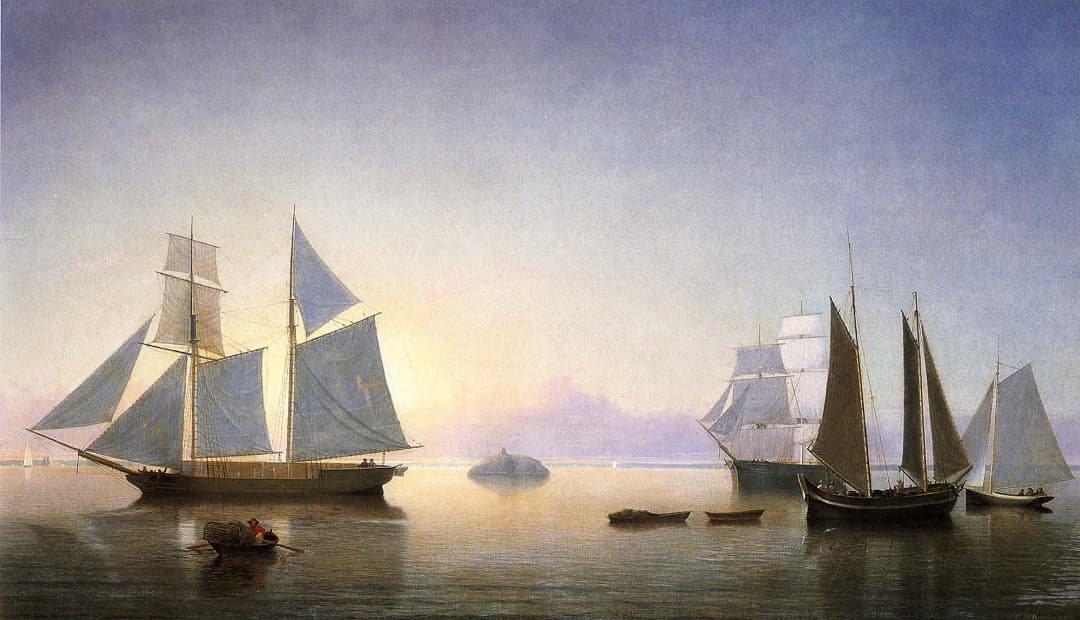
9. IVAN AIVAZOVSKY
"The ninth wave", 1850 (St. Petersburg, State Museum)
Oil on canvas, 221- 332 cm .
A seascape devoted painter, Aivazovsky reaches in this painting an absolute technical perfection, depicting a group of unlucky castaways trying to survive to the merciless ocean waves. Nevertheless, the centre of the composition is the powerful -almost mystical- and diffuse representation of the sun, which illuminates the scene with a strange, oneiric range of green and pink shades.
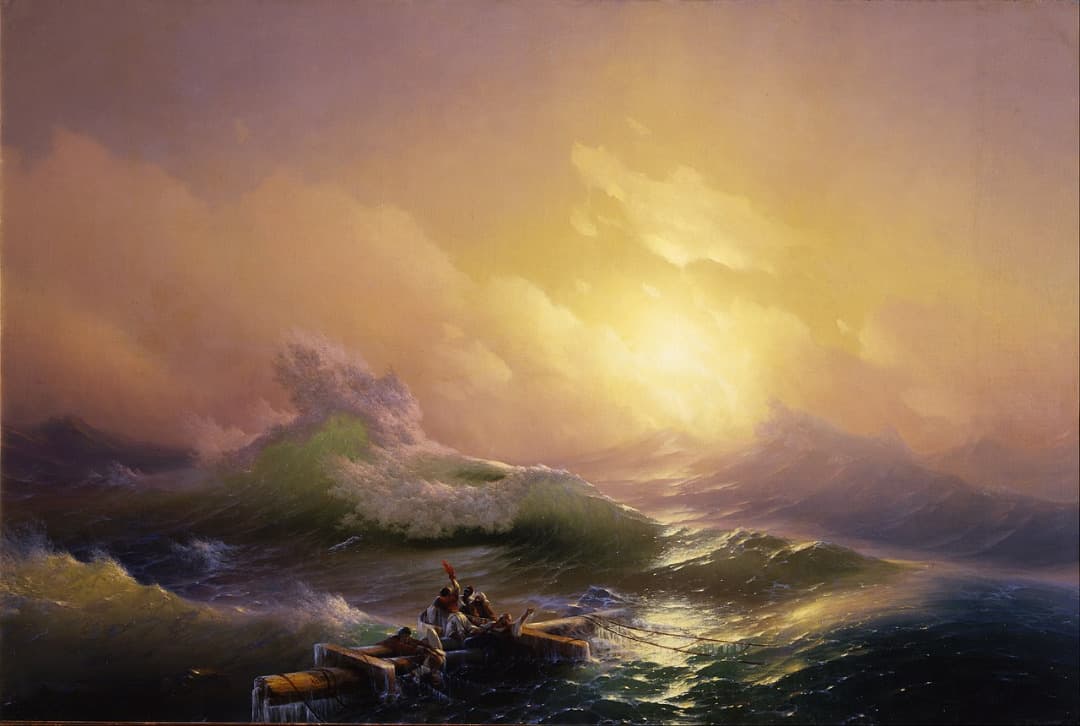
8. CASPAR DAVID FRIEDRICH
"The Monk by the sea", 1809/10 (Berlin Nationalgalerie)
Oil on canvas, 110- 172 cm
Contrary to the glorious calm of the work by Lane or the dramatic exuberance of Aivazovsky's masterwork, here we face a much more difficult work. The notorious horizontality of the picture and the evident contrast in the scale of the monk, almost insignificant when compared to the magnificence of the sea, fill the picture with a quite uncertain romantic message. Is the sea a neutral background behind the monk's deliberations, or perhaps are we looking at a strange dialogue between the man and the neverending ocean, a mystical mirror of the monk's thoughts?
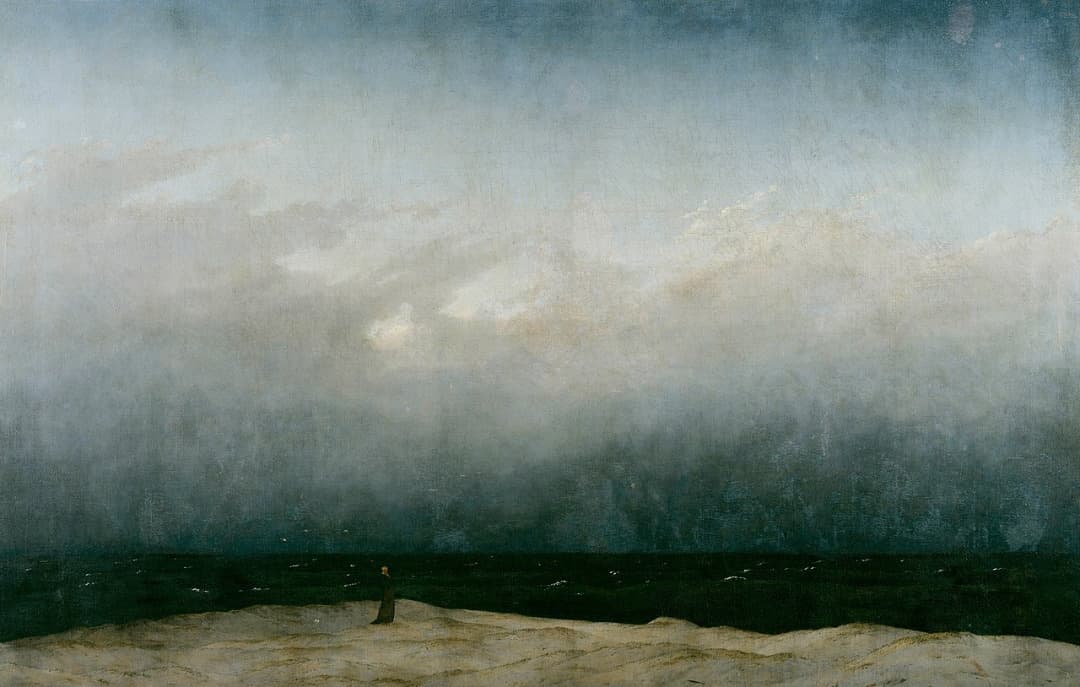
7. FREDERIC EDWIN CHURCH
"The icebergs", 1861 (Dallas Museum of Art)
Oil on canvas, 163.2- 285.1 cm .
The icy death. Beautiful and exuberant at first glance, this masterwork by Frederic Edwin Church is nevertheless a sinister and ruthless romantic document, showing the remains of a shipwreck in the icebergs, where it really does not matter if the sailors have survived or not: the merciless cold will soon kill them if the violence of the accident has not done it before. The brutal beauty of this canvas makes the Titanic story looks like a bad joke.
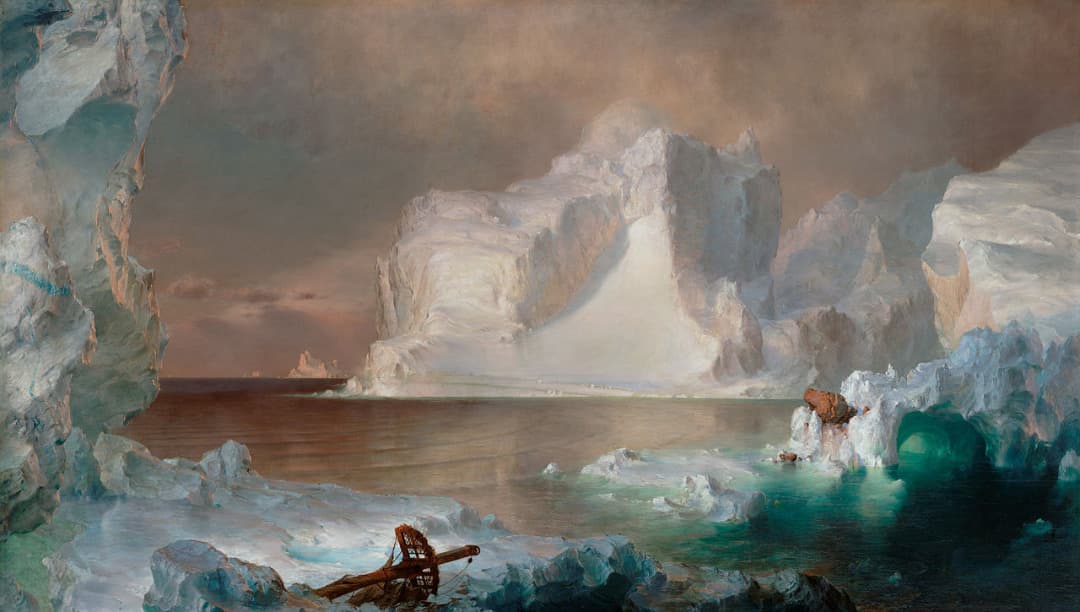
6. RICHARD DIEBENKORN
"Ocean Horizon", 1959 (Private collection)
Oil on canvas, 177.8- 162.6 cm .
Diebenkorn's urban seascapes present a unique and contemporary vision of the ocean: domesticated, friendly, desirable. In contrast with his abstract and more complex Ocean Parks, the Ocean Horizon presents a very simple composition with three evident layers for the land, the sea and the sky; all of them framed in a rectangular window. Following the crooked line marked by the electric lines, the ocean looks as accessible as the little cup of coffee we can see in the foreground.
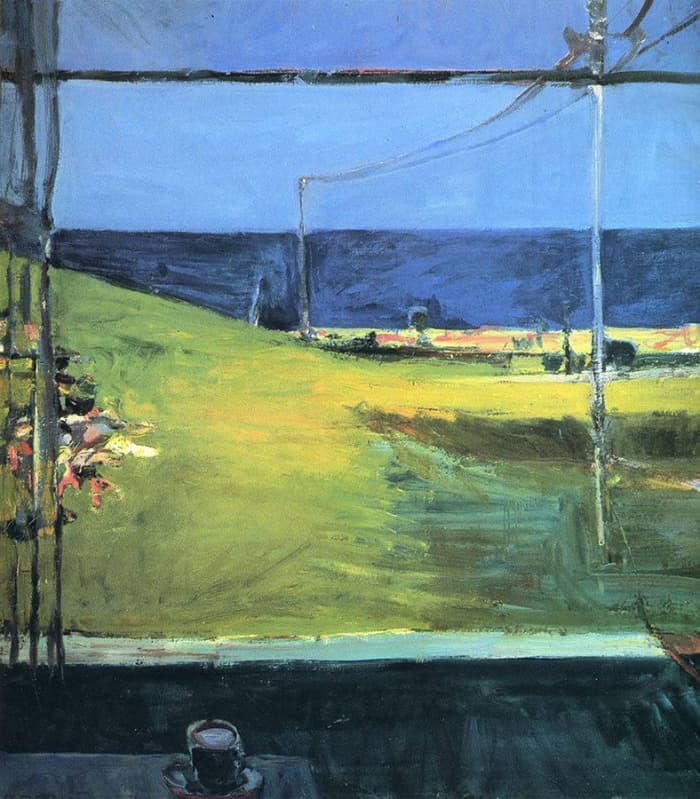
5. CLAUDE MONET
"La terrace de Sainte Adresse", 1867 (New York, Metropolitan Museum)
Oil on canvas, 98.1- 129.9 cm .
This glorious painting presents an curious parallelism with Diebenkorn's canvas, depicting the sea (here the Atlantic Ocean) as friendly, accessible, even as a recreational area to the relaxed society. Again, the composition is divided in three levels -sky, sea and land- and it is vertically organized by the two large flags fluttered by the ocean breeze. The painting is so delightful that we are immediately tempted to sit on one of the empty chairs to enjoy this sunny Sunday afternoon. Apart from this kind seascape, Monet also depicted the sea full of fierceness and fury in paintings such as "La Manneporte".
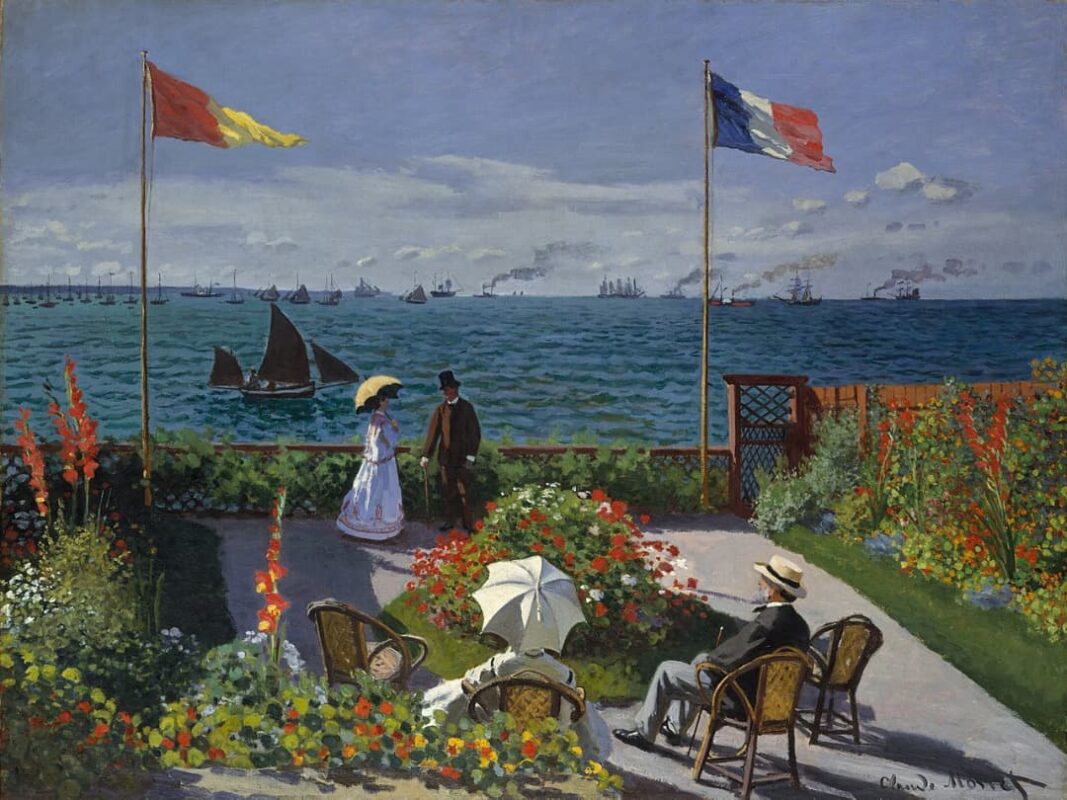
4. WINSLOW HOMER
"The Gulf Stream", 1899 (New York, Metropolitan Museum of Art)
Oil on canvas, 71.5- 124.8 cm.
All the kindness and charm present in the two precedent canvases is crushed in this devastating painting by Homer. Really, the terrible expressivity -bordering on macabre- of the work makes unnecessary almost any commentary, while we witness the tragic end of this unlucky sailor, depicted with an effective exaggeration, perhaps an evidence of Winslow Homer's background as a press reporter.
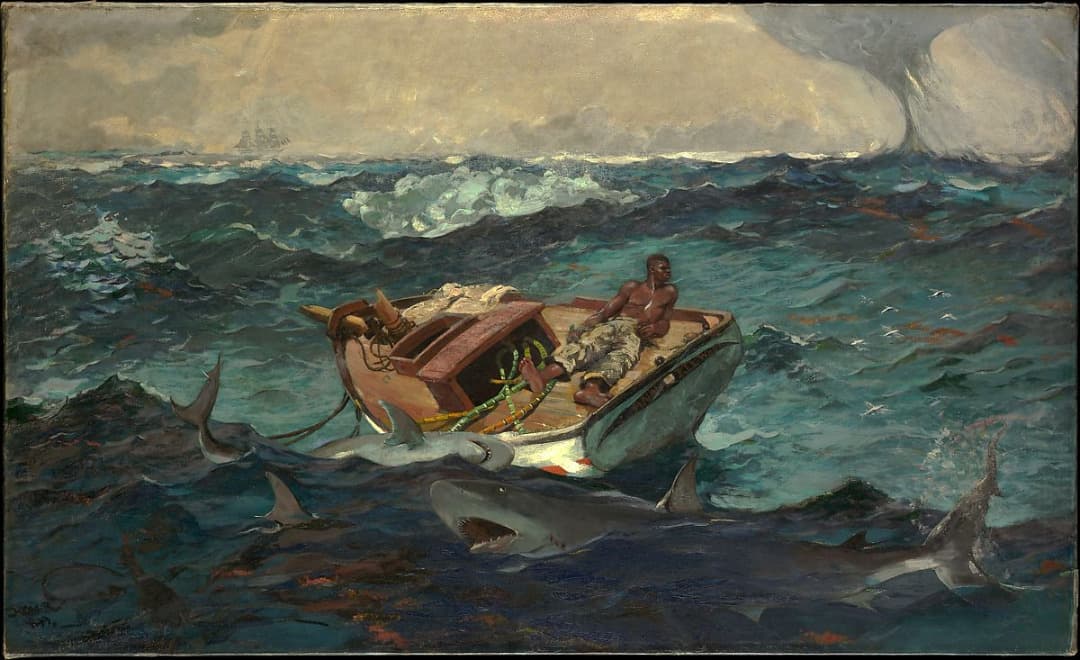
3. THEODORE GERICAULT
"The raft of the Medusa", 1819 (Paris , Louvre)
Oil on canvas, 491- 716 cm.
This is one of the most famous French paintings ever. Gericault creates a work that we can define as "politically incorrect", as it depicts the miseries of a large group of castaways abandoned after the shipwreck of a French naval frigate. We can even say that the picture is not exactly a seascape, but a classic triangular composition in which the human emotions are graduated from the exacerbated hope of those who -situated on the top of the pyramid- have sighted a saviour ship, to the man who -holding the corpse of a young man, perhaps his son- has abandoned any hope and is resigned to wait for death. In Gericault's work the sea has no charm, no beauty, no kindness: it is the villain, the killer, the predator that -forever looking for new victims- is patiently waiting for its time to kill.
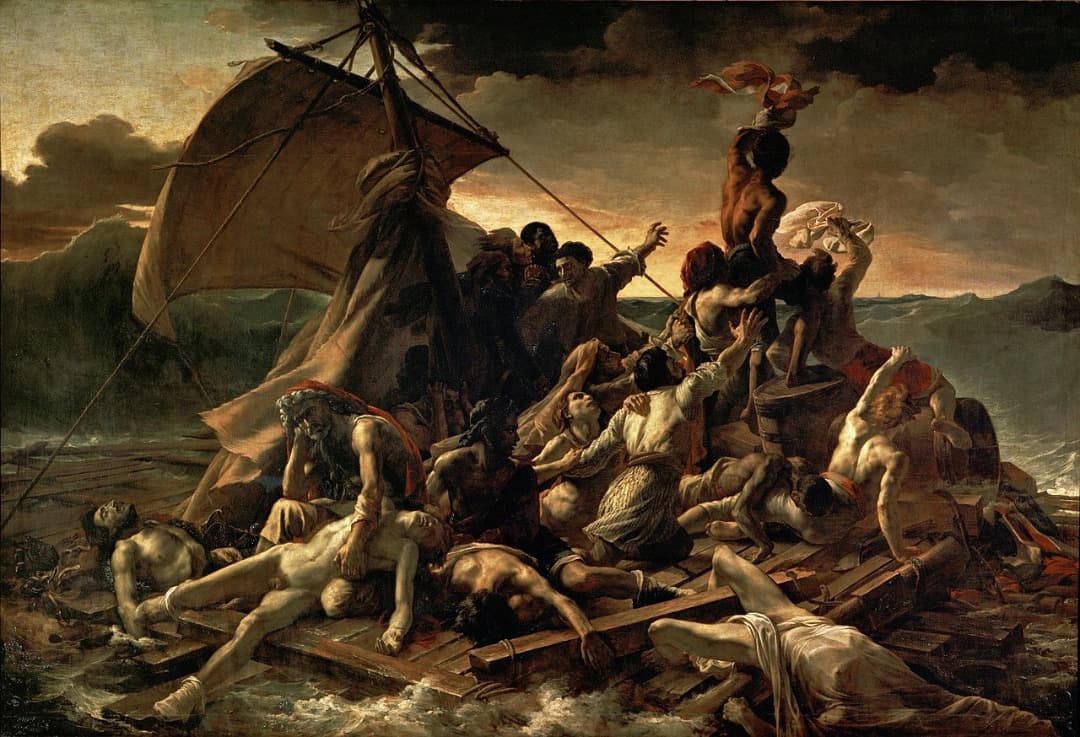
2. KATSUSHIKA HOKUSAI
"The Wave" ("The Great Wave off Kanagawa"), c.1830
Woodblock print, 25.4- 38 cm .
Japanese painters and engravers have always offered a different, almost mystical vision of the natural phenomena. The wave is here much more than a mere oceanic circumstance. It is a monster, a giant leviathan threatening with its fangs the agile and audacious ships that cross, flexible, the sea. The terrible ocean's claw is so powerful that it seems to be about to devour even the sacred Mount Fuji, depicted at the background as another victim of the evil wave.

1. JOSEPH MALLORD WILLIAM TURNER
"The fighting Temeraire tugged to her last Berth to be broken up", 1839 (London, National Gallery)
Oil on canvas, 91- 122 cm .
Turner is the greatest seascape painter from any age, and at least other two or three works by the British painter (Ulysses mocking Polyphemo, Peace – exequies on the sea…) could easily figure on this list if we had not take the decision of including only one work per artist. Audacious and technically perfect, Turner's masterpiece is an unusual representation of a royal ship, normally depicted in its maximum splendour like Fitz Hugh Lane did in his seascapes (see number 10), but here Turner tributed the brave Temeraire depicting its last trip before being scrapped. This supreme work was selected as the best painting in England in a poll organized by the National Gallery of London in 2005.
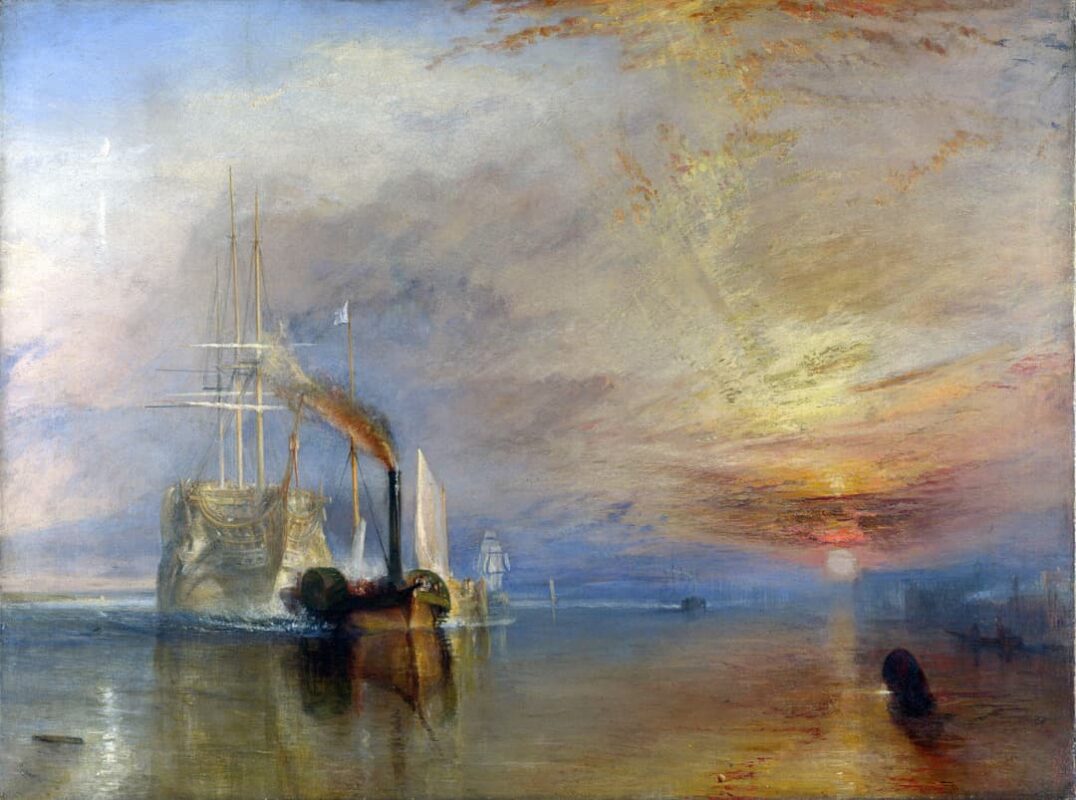
World's 10 greatest Seascapes · The Ocean in paintings
Famous Artists That Draw Wolves
Source: https://theartwolf.com/masterworks/seascapes/
Posted by: compoorwastincer.blogspot.com

0 Response to "Famous Artists That Draw Wolves"
Post a Comment